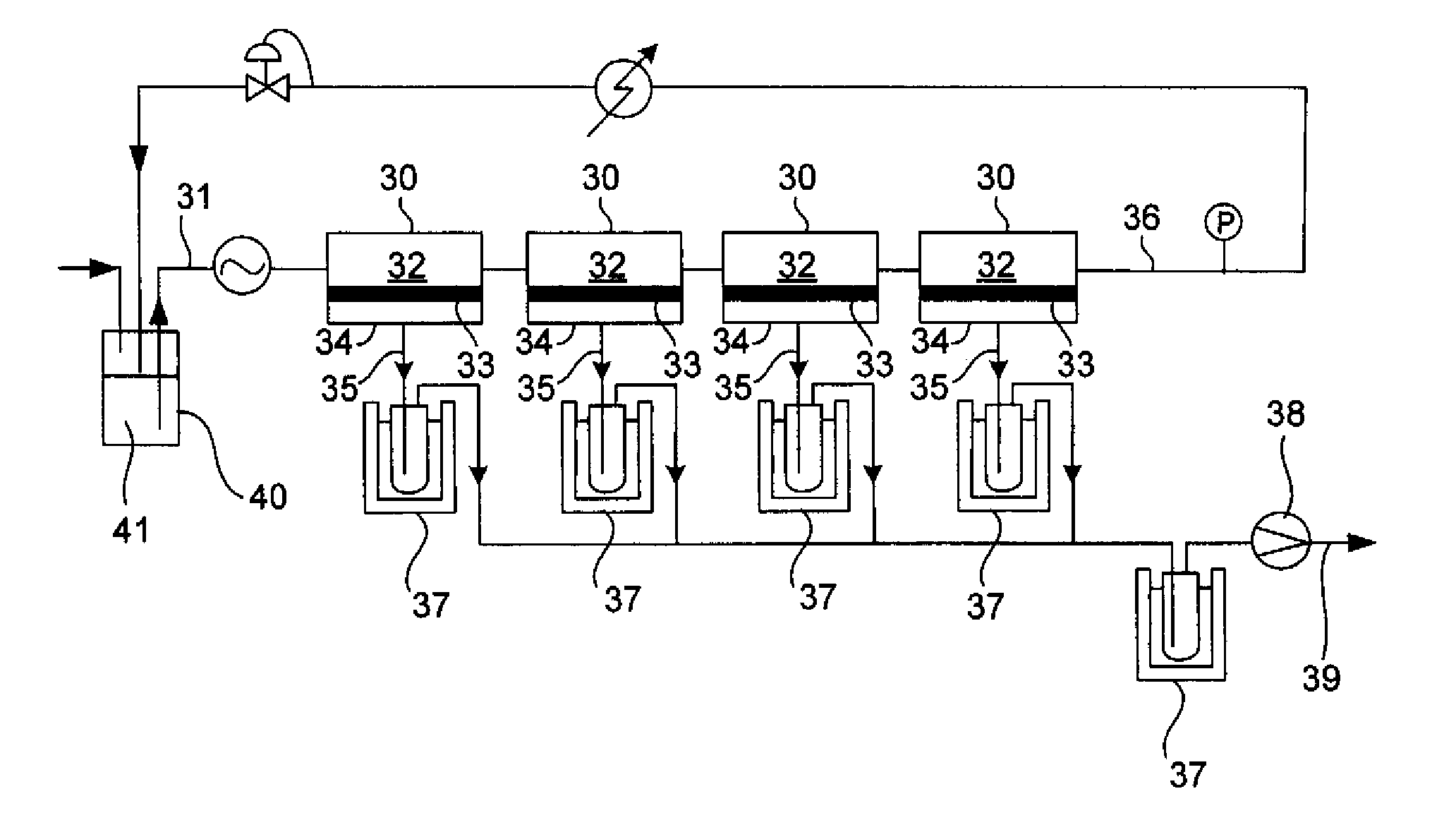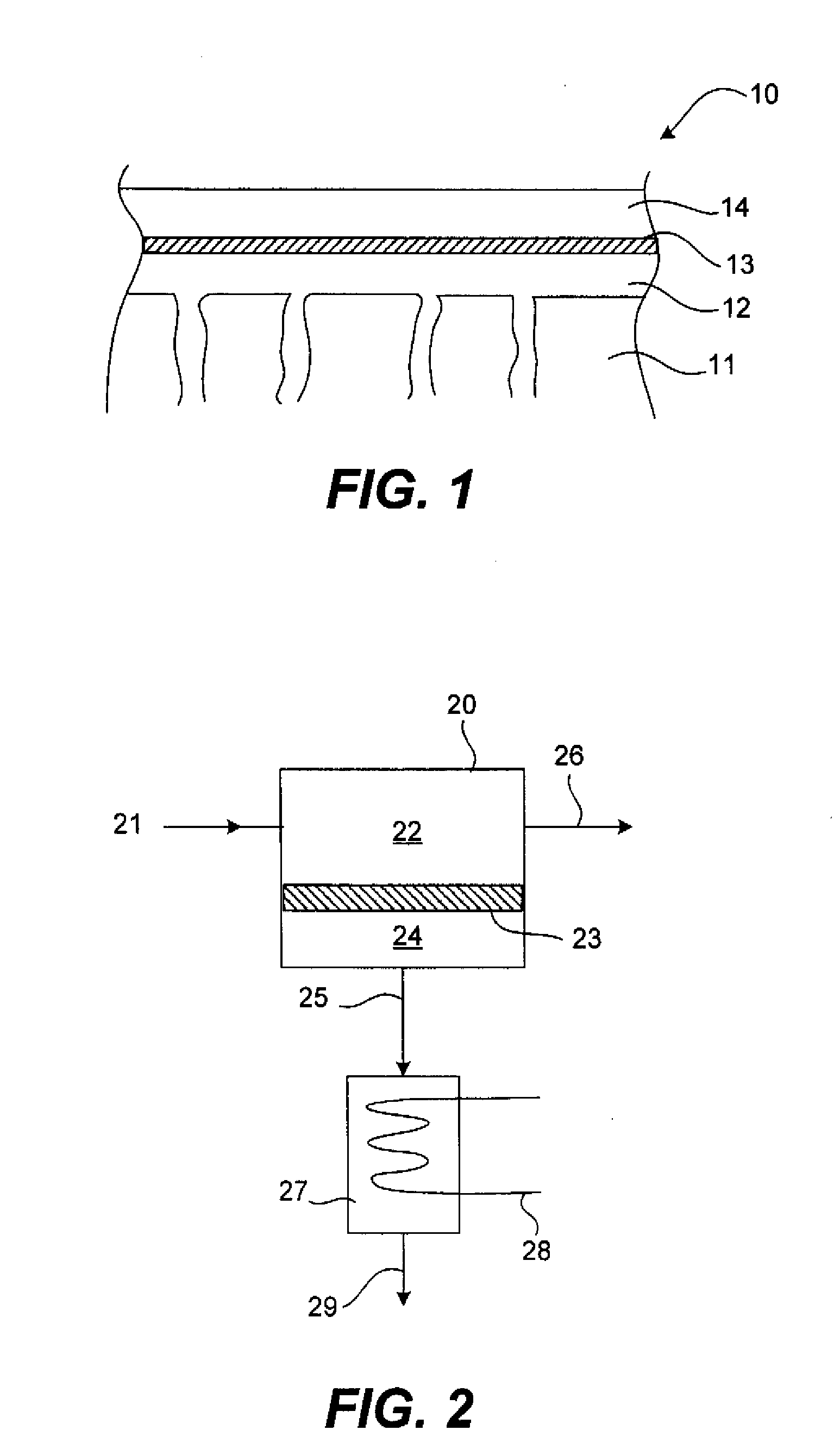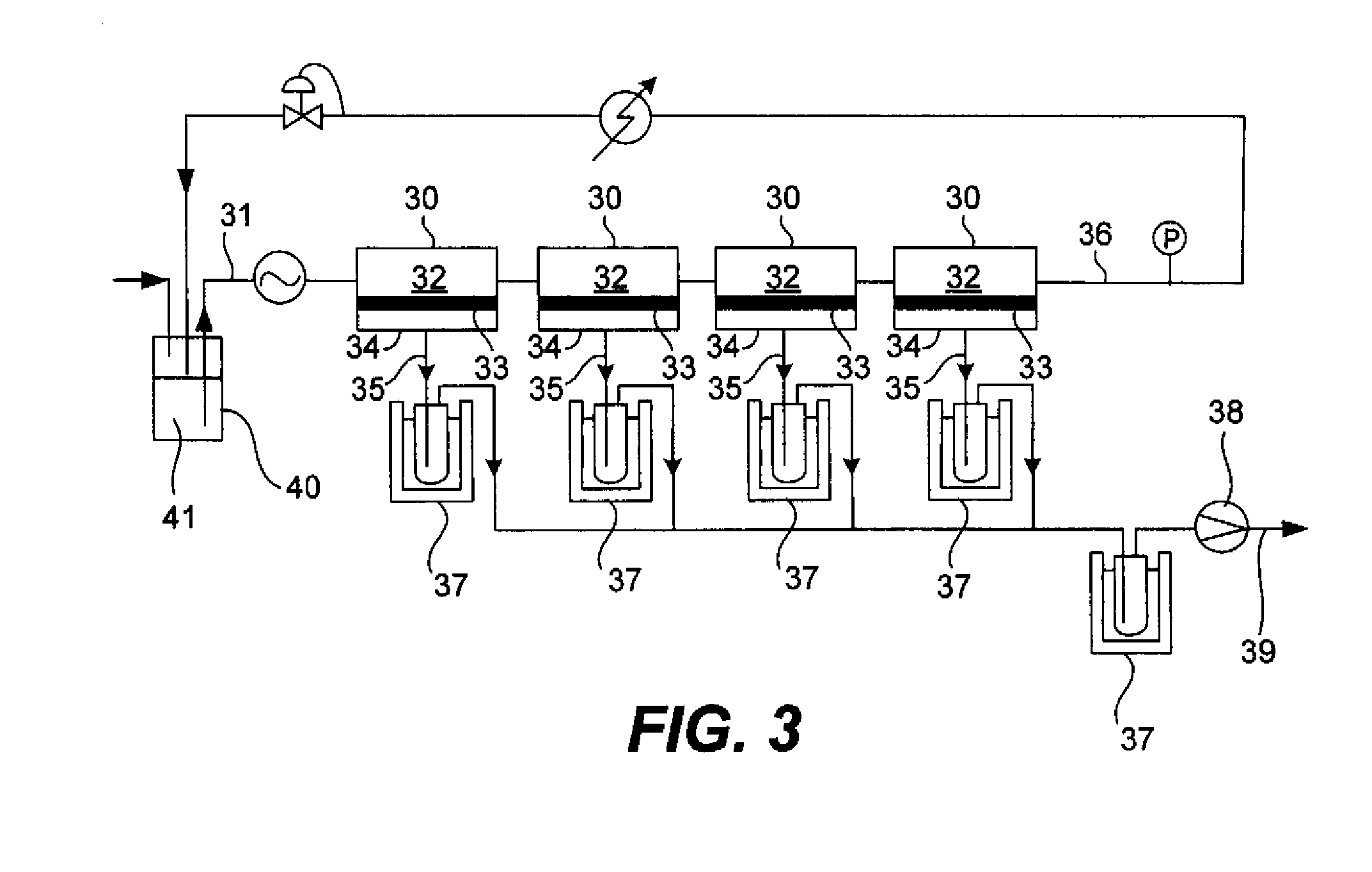Liquid-phase and vapor-phase dehydration of organic / water solutions
- Summary
- Abstract
- Description
- Claims
- Application Information
AI Technical Summary
Benefits of technology
Problems solved by technology
Method used
Image
Examples
example 1
Membranes
[0256]Composite membranes were made. All of them included microporous support layers made using standard casting procedures to apply polyvinylidene fluoride (PVDF) solution to polyphenyl sulfide (PPS) paper. One set of membranes had a Hyflon®AD60 selective layer applied from a 0.5 wt % solution; the other had a Teflon®AF1600 selective layer applied from a 1 wt % solution.
[0257]Celfa CMC VP-31 composite membrane was purchased from Folex-Celfa AG, Bahnhofstrasse 6423, Seewen, Switzerland. The membrane is a composite membrane suitable for pervaporation, with a hydrophilic selective layer of unknown composition.
[0258]The Celfa CMC VP-31 has only a hydrophilic selective layer; the membranes with the Hyflon®AD60 and Teflon®AF1600 layers have only a dioxole-based selective layer.
example 2
Water Permeation with Hyflon®AD60 Selective Layer Only
[0259]Samples of the Hyflon®AD membranes of Example 1 were cut into stamps and tested in a permeation test-cell apparatus under pervaporation conditions with ethanol / water mixtures containing different amounts of water. The permeate pressure was maintained at 2.5 ton and the temperature of the feed solution was 75° C. The results are shown in Table 2.
TABLE 2WaterWaterEthanolConcentrationPermeancePermeanceWater / Ethanolin Feed (wt %)(gpu)(gpu)Selectivity4.7960156417.81,090176421.21,060176367.01,160196186.51,090166895.71,3701876
[0260]As can be seen, the water and ethanol permeances were stable over the tested range, increasing only slightly with increasing water concentrations in the feed solution. The selectivity was also maintained over the range of feed water concentrations, but was only about 60 or 70.
example 3
Water Permeation with Teflon®AF1600 Selective Layer Only
[0261]Samples of the Teflon®AF membranes of Example 1 were cut into stamps and tested in a permeation test-cell apparatus under pervaporation conditions with ethanol / water mixtures containing different amounts of water. The test conditions were the same as in Example 2. The results are shown in Table 3.
TABLE 3WaterWaterEthanolConcentrationPermeancePermeanceWater / Ethanolin Feed (wt %)(gpu)(gpu)Selectivity3.12,660116234.72,470108237.22,9701102710.93,6301213017.82,7101002767.02,94010927
[0262]As can be seen, this membrane also exhibited good stability under exposure to high concentrations of hot water. The water / ethanol selectivity was considerably lower than for the Hyflon®AD membranes, however.
PUM
| Property | Measurement | Unit |
|---|---|---|
| Temperature | aaaaa | aaaaa |
| Temperature | aaaaa | aaaaa |
| Fraction | aaaaa | aaaaa |
Abstract
Description
Claims
Application Information
 Login to View More
Login to View More - R&D
- Intellectual Property
- Life Sciences
- Materials
- Tech Scout
- Unparalleled Data Quality
- Higher Quality Content
- 60% Fewer Hallucinations
Browse by: Latest US Patents, China's latest patents, Technical Efficacy Thesaurus, Application Domain, Technology Topic, Popular Technical Reports.
© 2025 PatSnap. All rights reserved.Legal|Privacy policy|Modern Slavery Act Transparency Statement|Sitemap|About US| Contact US: help@patsnap.com



